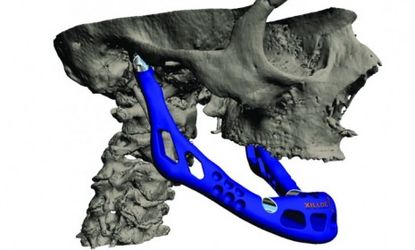
The last thing I would like to talk about concerning my rotation with Dr. VanKoevering is his research. Dr. VanKoevering, who previously obtained a bachelor’s degree in Biomedical Engineering, is currently involved in very interesting projects, such as 3D printing.
Three-dimensional printing is an evolving field of biomedical engineering, where certain body parts can be reproduced thanks to a specialized printer which uses materials such as titanium alloy, inert polymers, silicone, and hydrogel. These printers work with sub-millimeter resolution at rapid speed and are able to create highly-detailed structures, tailored to a patient’s anatomical needs.
With 3D printing, it is possible to create prostheses, wearable devices and implants (bioresorbable or permanent) that make up for missing body parts in certain patients, such as the ear, nose or jaw. Surgical models for preoperative planning and which serve as intraoperative guides can facilitate surgical precision. With this technology it is also possible to manufacture educational models for patients, anatomy students, as well as for the purposes of surgical simulation. Finally, 3D printing can be used in tissue engineering to make scaffolds and even for bioprinting.
Preoperative planning can now be taken to the next level, through digital planning. Dr. VanKoevering, an otolaryngologist that specializes in facial tumors, uses this technique to determine the exact dimensions and shape of bone grafting he will need to rebuild a mandible, or a parietal bone. Research indicates that surgical/digital planning saves between 62 and 85 minutes of OR time (and up to 100 minutes in head and neck surgery), reduces blood loss, increases reconstructive accuracy, improves bony unions required for a better osteosynthesis, improves tumor localization, and, most importantly, reduces surgical complications.